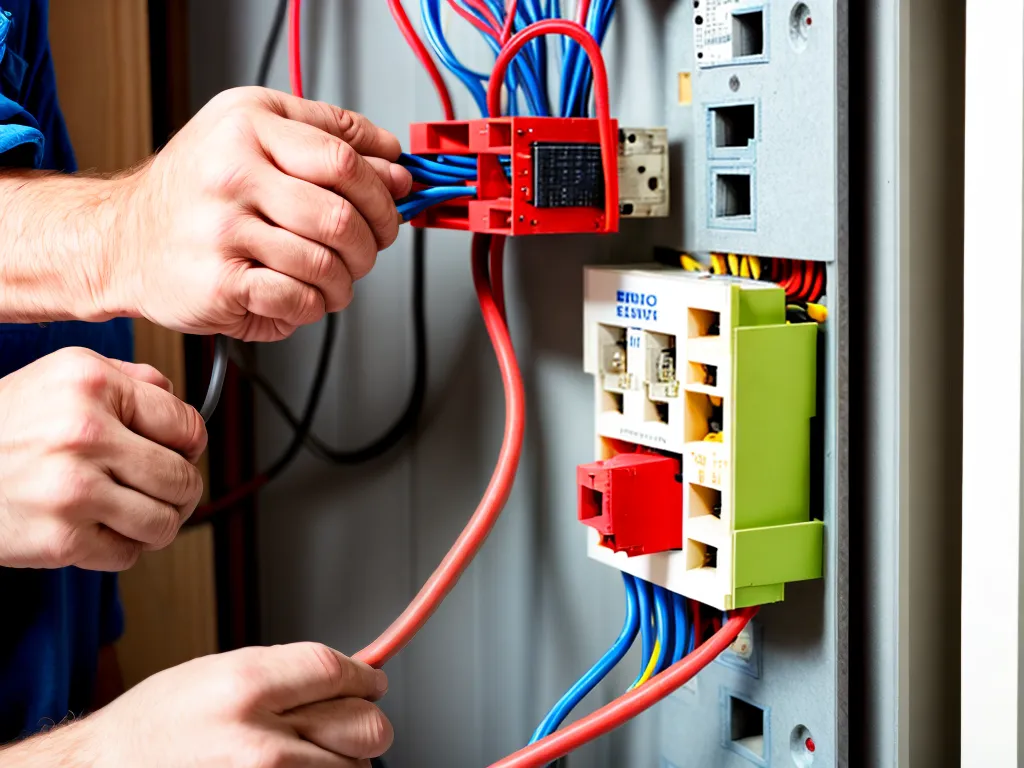
How to Install Your Own Electrical Wiring Safely
Installing electrical wiring in your home can be a satisfying DIY project that saves you money. However, working with electricity can be extremely dangerous if not done properly. As an inexperienced homeowner, you should not attempt any major electrical projects on your own. This article will provide an overview of electrical safety and simple wiring tasks that a homeowner can safely DIY.
Research Electrical Codes and Permits
Before starting any electrical project, the first step is to research your local electrical codes and permit requirements. Electrical codes provide safety standards that must be followed. Common codes include the National Electrical Code (NEC) and International Residential Code (IRC). Check with your local building department to see if a permit is needed before wiring a new circuit or replacing an electrical panel. Permits help ensure your project follows code.
Turn Off Power at the Breaker Box
Before touching any wires, use a non-contact voltage tester to confirm the power is off. Then, turn off the appropriate circuit breaker in the main electrical panel that controls the wires you'll be working on. To prevent accidental shocks, it's essential to verify the circuit is dead. Consider turning off the main breaker to the entire house if unsure about which breaker controls the circuit. Never work on live wires.
Test Wires Before Working
Always double-check that power is off using a non-contact voltage tester. Test wires before touching them to be sure they are completely dead. Verify the correct circuit is off by testing multiple points along the wire run. Checking wires with a tester helps avoid accidental contact with live current. Only work on verified dead wires that show no voltage present.
Wear Protective Equipment
When working around electrical wires, eye protection, gloves, long sleeves and safe shoes should always be worn. Choose well-insulated gloves designed for electrical work. Never wear metallic jewelry or watches when working with wiring. Protective equipment reduces risk of electrocution and burns.
Avoid Water Near Electrical Work
Keep the area completely dry when replacing outlets or lighting fixtures. Never work near sinks or other wet areas without first turning off power and unplugging appliances. Water conducts electricity and poses a serious shock hazard. Use a GFCI outlet when electrical work is done in kitchens, bathrooms and other damp locations.
Don't Overload Circuits
Follow the amperage limits printed on circuit breakers and avoid overloading them with too many lights or outlets. Overloaded circuits can overheat wires and cause fires. When in doubt, install a higher capacity breaker and heavier gauge wire than required. For large appliances like air conditioners or freezers, it's often best to provide them with their own dedicated circuit.
Secure Cables Properly
Use staples or cable clamps to neatly route and fasten wires inside boxes and through stud bays. Keep wire runs as short and direct as possible. Never staple directly into a wire itself. Follow code requirements for securing cables every 4 to 6 feet. Exposed cables running across floors or along walls should be avoided.
Test Your Work Before Turning Power Back On
Double check that all newly installed receptacles and light fixtures are wired correctly. Verify ground wires are securely attached. Testing first avoids potential shorts or shocks when power is restored. With everything pre-verified, turn the main breaker back on and cautiously test that each component functions properly. Now monitor your work over time to ensure no problems arise.
By following basic safety practices and code requirements, an inexperienced do-it-yourselfer can successfully install new lighting, switches and outlets. However, significant rewiring projects and electrical panel work should be left to trained electricians. Proper techniques and safety equipment reduce, but do not eliminate, the considerable risks of working with electrical wiring. Hire a professional for any tasks beyond your skill level.